Last Updated on May 15, 2024 by teamobn
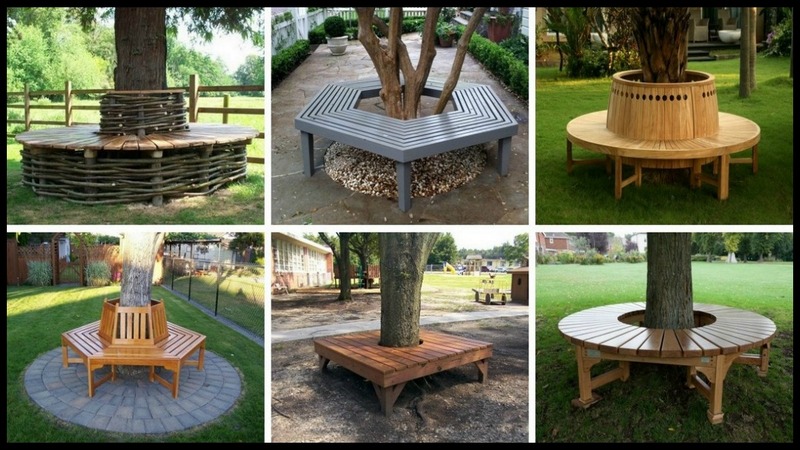
Do you have a favorite park where you love to spend a warm afternoon sitting on a bench while reading your favorite book under the shade of a tree? A place to enjoy a good munch while having a good conversation with your bestfriend, or a quiet drink?
Wouldn’t it be nice to have your own private oasis right in your backyard? A tree bench is a perfect way to make that happen! Whether you’re looking to create a space for reading, relaxing, or entertaining, it is a great addition to any yard.
Your yard doesn’t have to be the size of a park, as long as it has a tree. A tree bench is a great way to use the space and the shade under your tree.
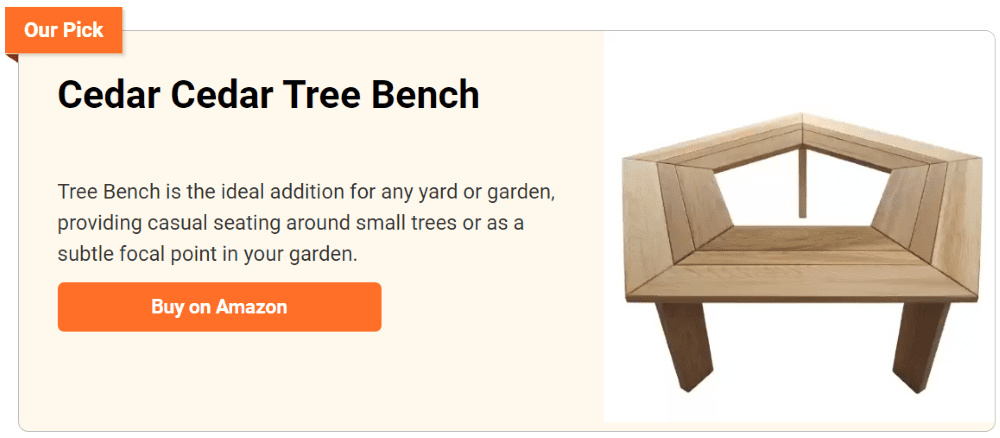
The shade of the tree and the softness of the bench makes it a perfect place to sit and relax. Sitting on it under the shade of a tree gives the best feeling of relaxation.
The cool temperature and the sound of the leaves rustling in the wind can help to reduce stress and promote a sense of peace. Sitting in the shade of a tree can also help to protect you from the sun’s harmful rays.
You can make it your personal space as there are plenty of beautiful tree bench designs to choose from. In this collection alone you’ll find a good variety of designs. You’ll definitely find one that calls out to you.
If you can’t find the one that suits you, why not design your own? Use the creative ideas here as a starting point. Building it yourself will allow you to customize the dimensions and the look.
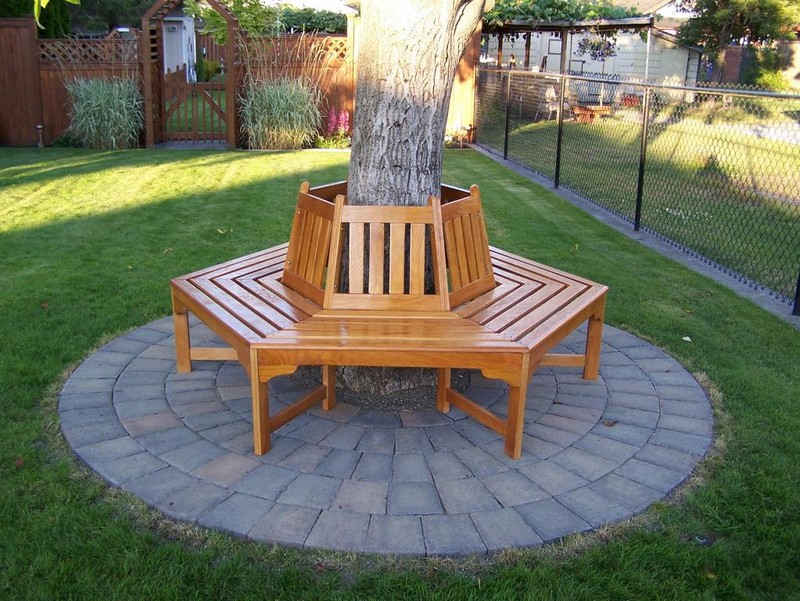
Ready to start building your own relaxation haven?
How to build a tree bench?
Building a tree bench is a great way to add seats to your yard and enjoy your trees. Here are some tips on how to build a tree bench:
1. Choose a comfortable tree.
You’ll be spending a lot of time sitting on your bench, so make sure to choose a tree that you find comfortable. Pick a tree that has a large shade to help you stay cool in the summer heat.
2. Measure the tree and plan your bench accordingly.
You’ll want to make sure that your bench is the right size for the tree and that it will be comfortable to sit on.
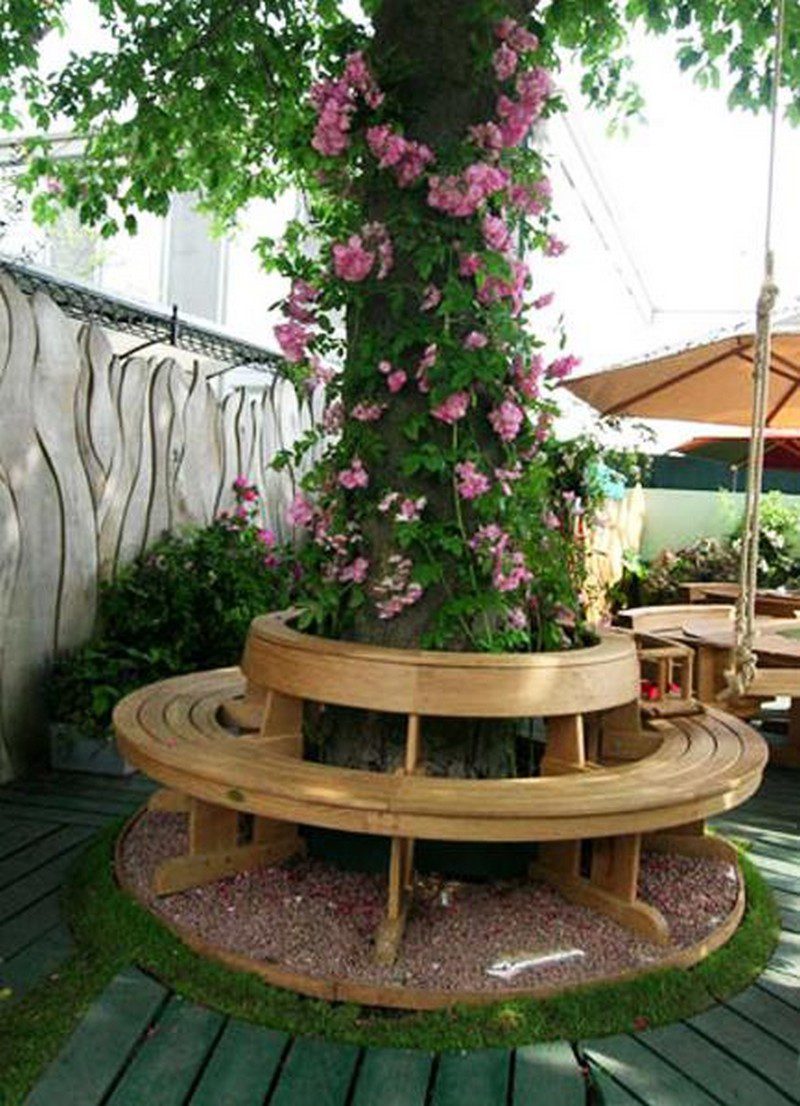
3. Cut the lumber for your project.
Be sure to use a saw or other cutting tool that is intended for cutting lumber. You can use templates to make sure you are cutting the correct sizes of lumbers for your bench accordingly.
4. Assemble the parts according to your plan.
Taking extra care in assembling your project is a must. In assembling, you will have to drill holes to your pieces, screw them tightly and and make sure that thee pieces fits well.
Depending your preferences, you can choose various designes for your project. You can have it circling the tree, or you can have it on one side. You can paint them and add extra accesories that would help you relax.
So what are you waiting for? Ask your family and friends for this project to come to life. 🙂
Click on any image to start the lightbox display. Use your Esc key to close the lightbox. You can also view the images as a slideshow if you prefer 😎
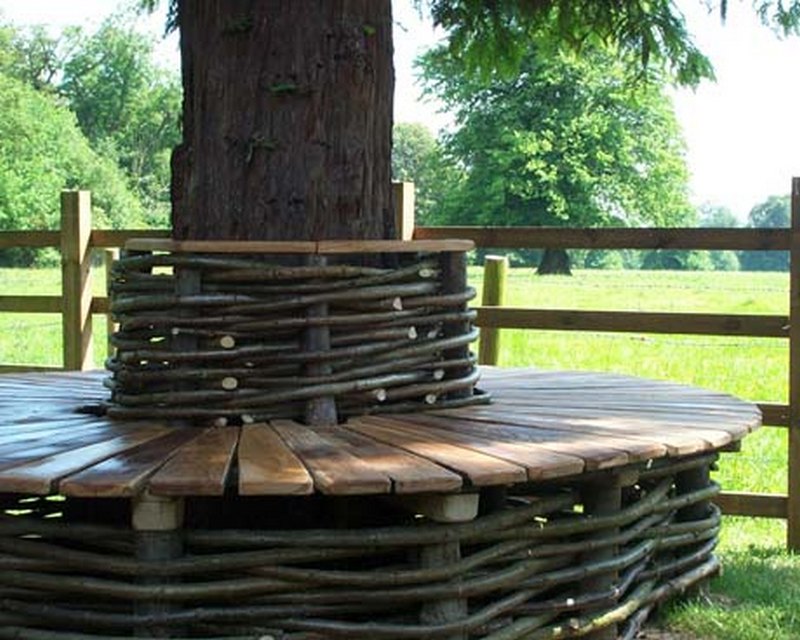

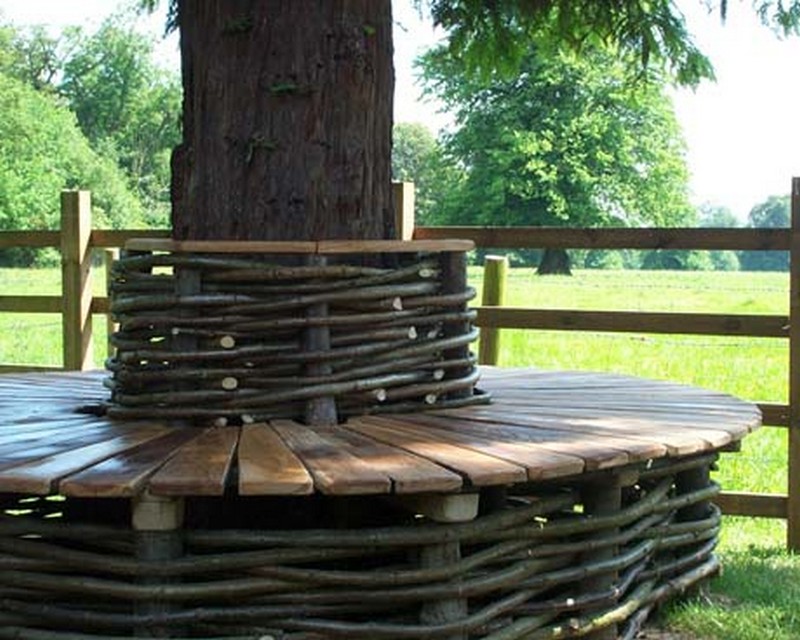
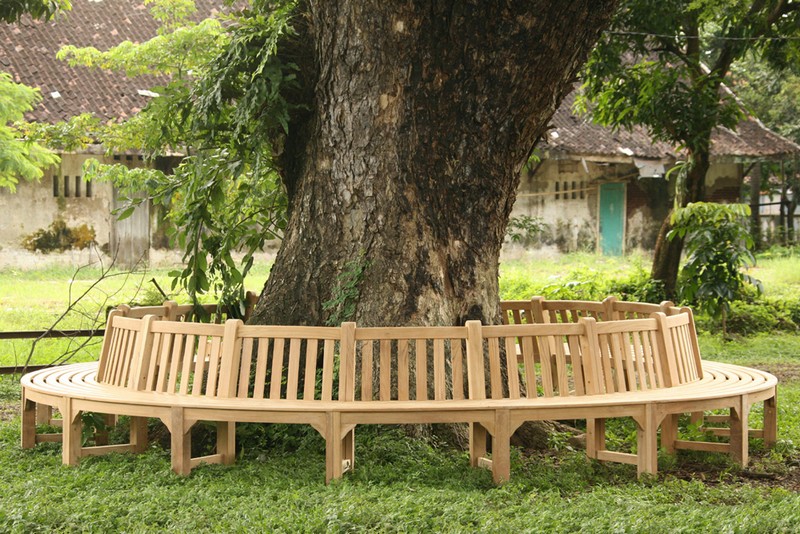

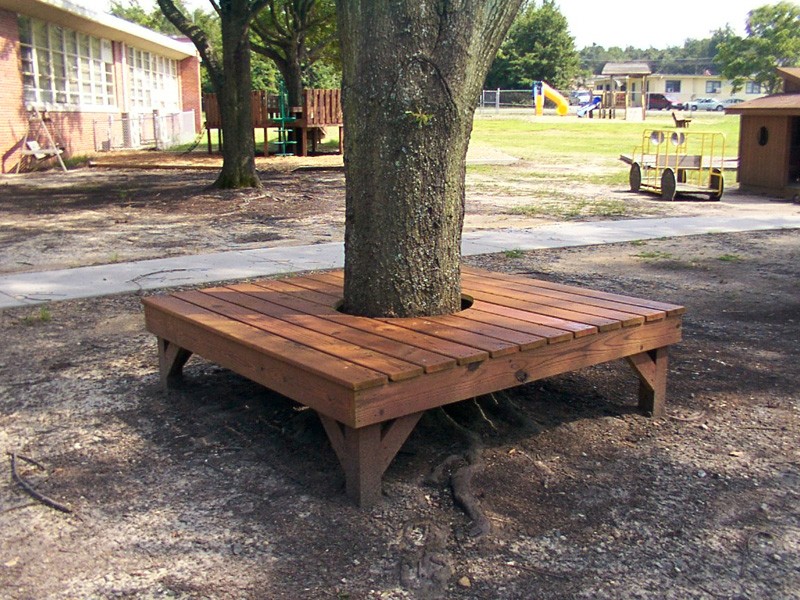

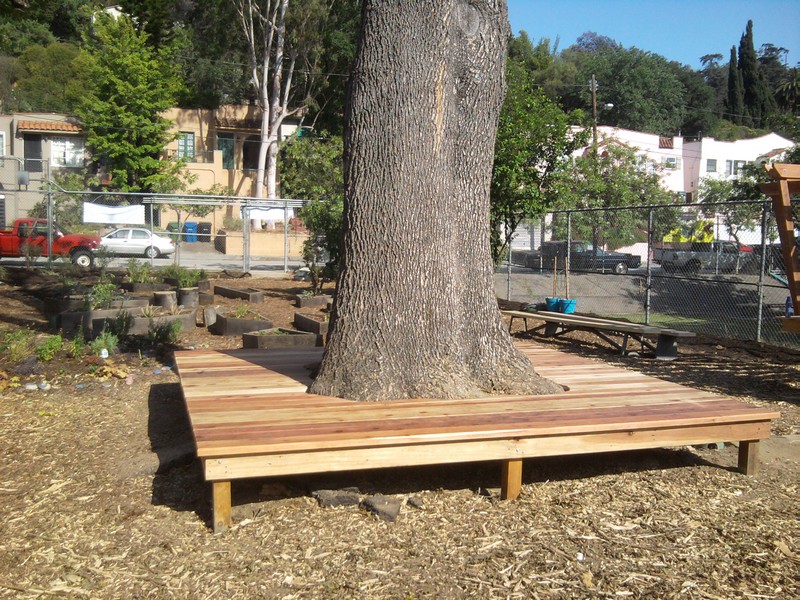
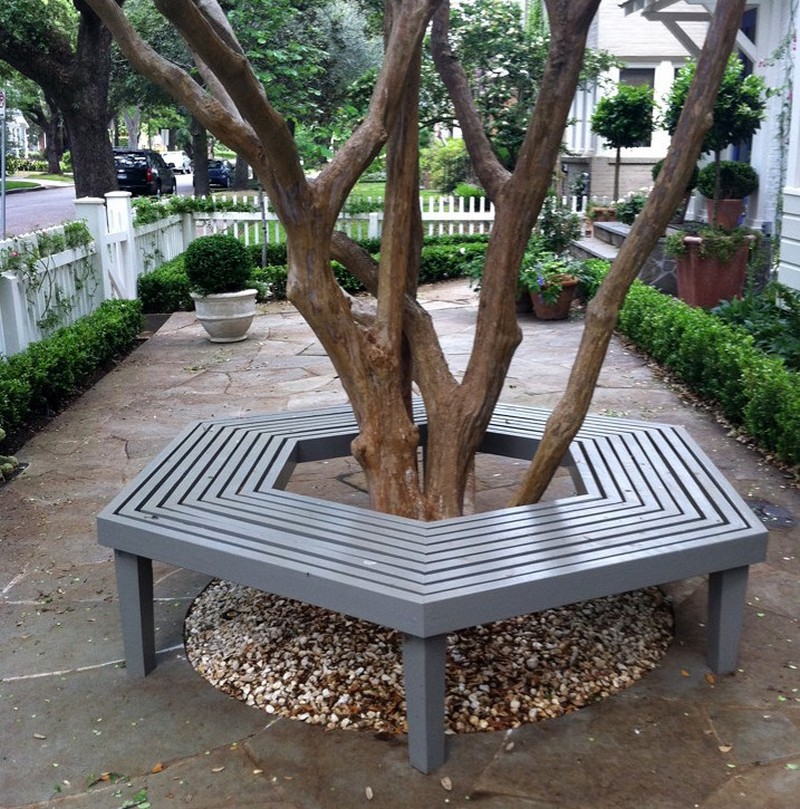
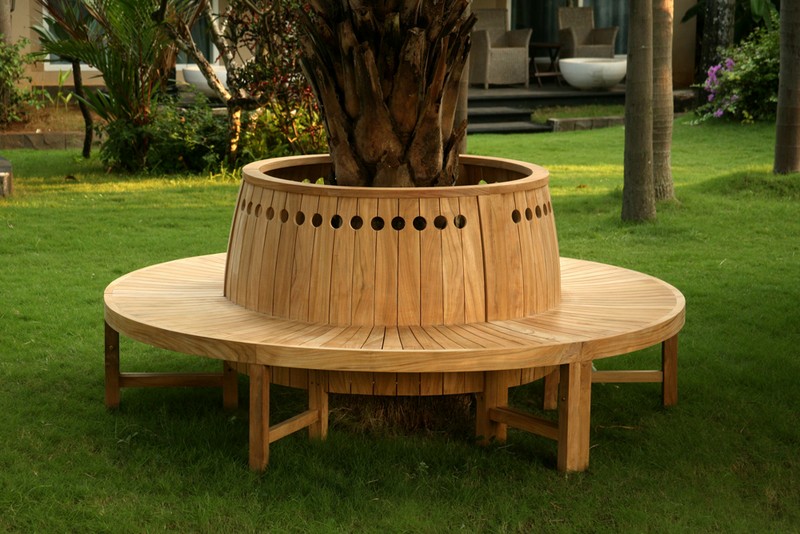
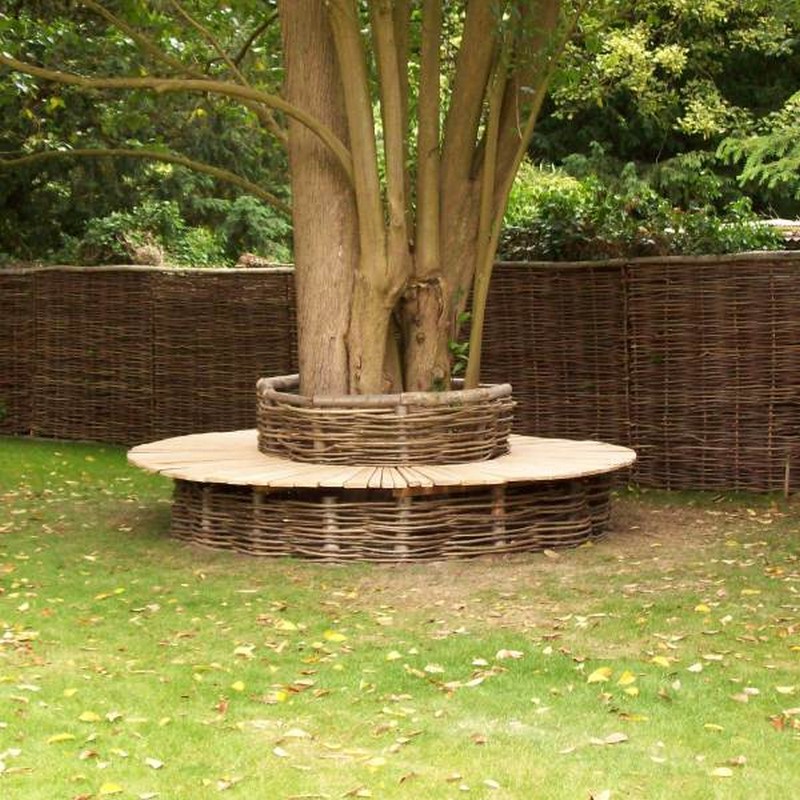
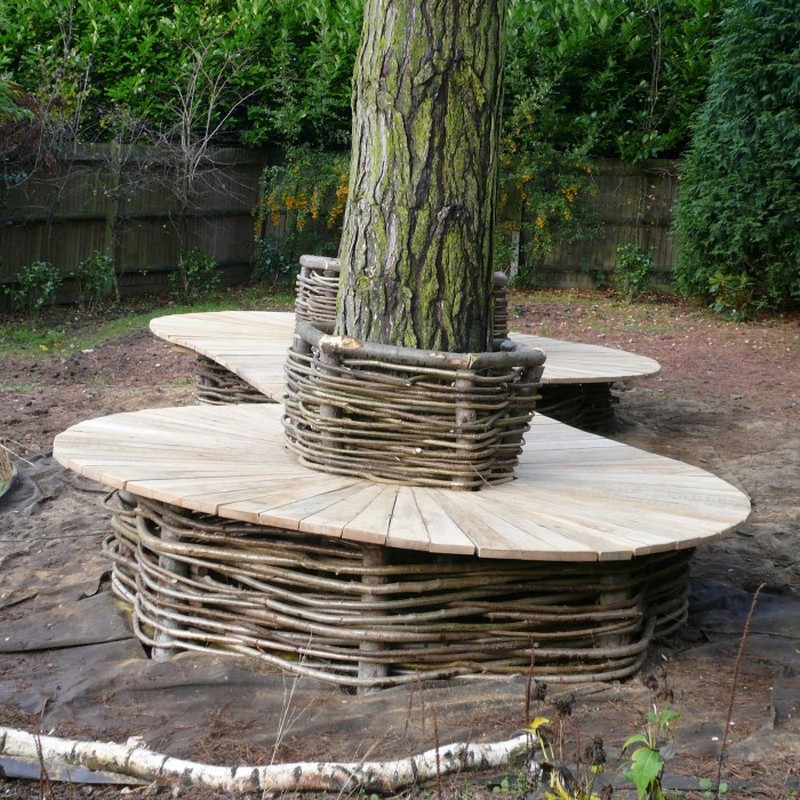
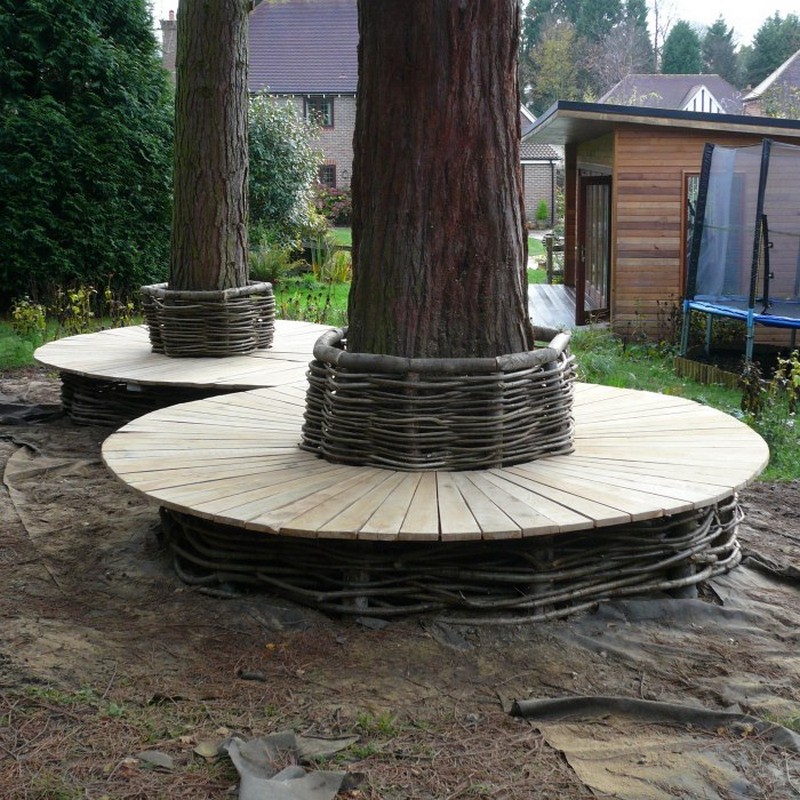
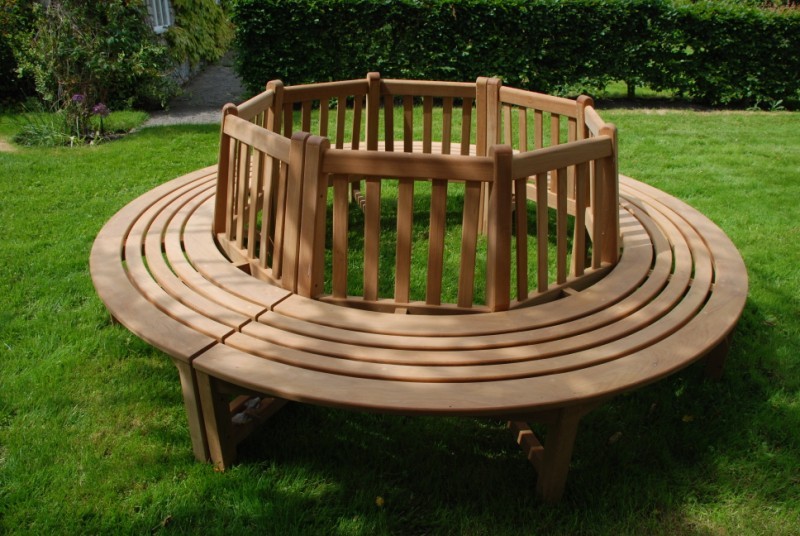

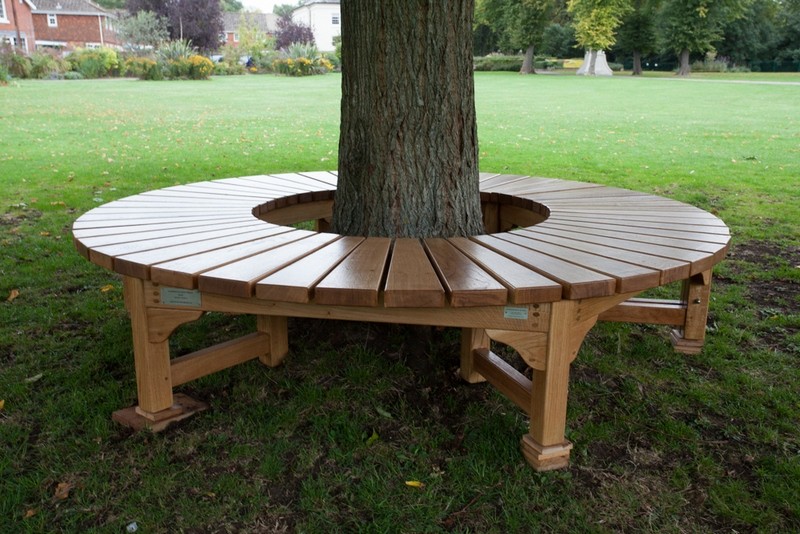
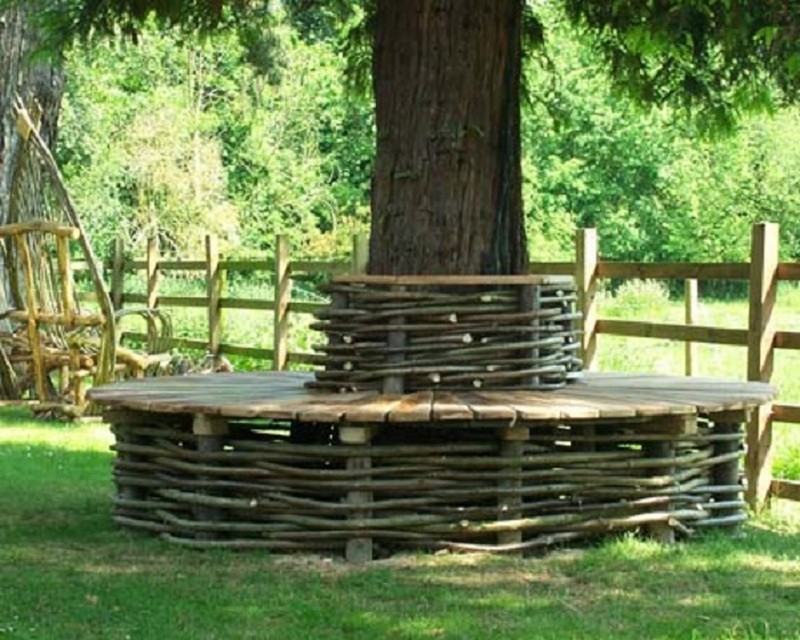
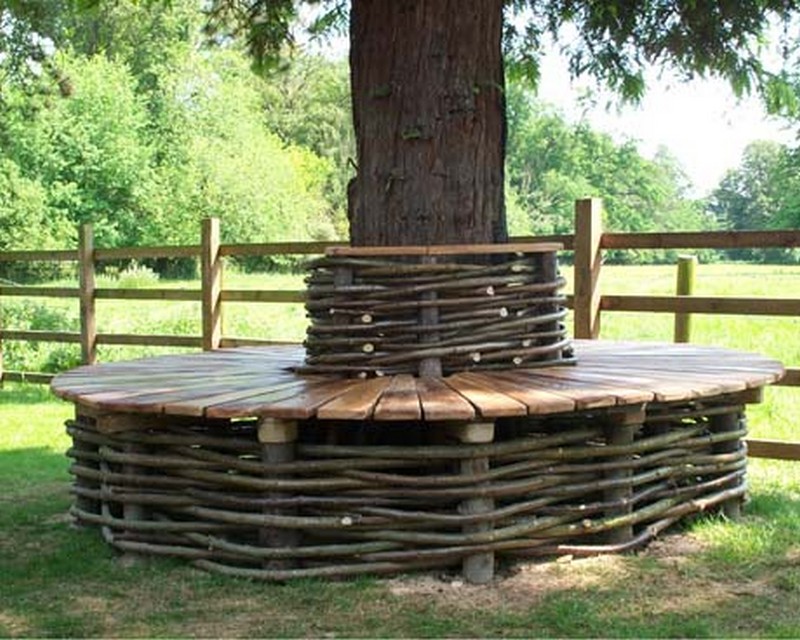
Learn how to build a bench around a tree by following the step-by-step instruction here…
Choosing the Right Materials for Your Tree Bench
Creating a tree bench involves more than just aesthetics; it requires selecting materials that ensure longevity and durability in various weather conditions. The right materials will not only complement your garden’s design but also stand up to the elements, making your bench a lasting addition to your landscape.
Wood Options
- Teak: Teak is highly regarded for outdoor furniture due to its natural oils that resist water and prevent decay. It’s a durable option that weathers beautifully, maintaining its appearance over time.
- Cedar: Cedar is a further great option because of its inherent resistance to dampness, rot, and insect infestation. Its unique perfume adds to its attraction, and it is lighter than teak, which makes wood easier to work with.
- Pressure-Treated Pine: This is a more cost-effective option that’s treated to resist rot, decay, and termites. While it doesn’t offer the same natural beauty as teak or cedar, it can be painted or stained to match any style.
Metal Options
- Aluminum: Lightweight and rust-resistant, aluminum is perfect for areas with high humidity. It’s also easy to mold into intricate designs for a more decorative look.
- Wrought Iron: If you’re going for durability and strength, wrought iron is a reliable choice. It can handle heavy use and harsh weather, though it may require treatments to prevent rust.
Composite and Recycled Materials
- Composite: Composite materials are minimally maintained and made from a combination of polymers and wood fibers. They are fade, rot, and splitting resistant.
- Recycled Plastic: For an environmentally conscious choice, recycled plastic is ideal. It mimics the look of wood but is virtually maintenance-free and resistant to weathering and insects.
When selecting materials for your tree bench, consider the climate, the level of maintenance you’re willing to commit to, and how the materials will blend with the natural surroundings. Making the right choice will ensure your bench remains a cozy, inviting spot in your garden for years to come.
Landscaping Ideas Around Your Tree Bench
Enhancing the area around your tree bench can transform it into a stunning focal point of your garden. Thoughtful landscaping not only complements the bench but also integrates it seamlessly into your outdoor space, creating a harmonious and inviting atmosphere.
Planting Strategies
- Ground Covers: Consider planting ground covers that thrive in the shade of your tree. Options like ivy, periwinkle, or hostas can add texture and color while keeping weeds at bay.
- Flowering Plants: For a pop of color, incorporate shade-loving flowers such as impatiens, begonias, or astilbes. These plants will brighten the area around your tree bench and create a cheerful ambiance.
- Ferns and Moss: Adding ferns and moss around the bench can enhance the natural woodland feel. These plants are perfect for shady areas and add a lush, green look throughout the year.
Mulching and Edging
- Mulch: Applying mulch around the tree bench not only improves the soil quality but also maintains moisture and suppresses weeds. Choose organic mulch like wood chips or bark to complement the natural setting.
- Edging: Define the space with natural stone or decorative edging to keep the garden tidy and contained. This also helps to separate the different types of plantings and adds structure to the landscaping.
Accessorizing the Space
- Pathways: Create a pathway leading to the tree bench using stepping stones, gravel, or rustic wood chips. This not only adds functionality but also enhances the aesthetic appeal of the area.
- Lighting: Incorporate low-voltage landscape lighting or solar-powered lanterns to illuminate the path to your tree bench and the surrounding plants. This creates a magical ambiance at night and ensures the space is usable after sunset.
- Decorative Elements: Consider adding a small fountain or a bird bath near the tree bench. The sound of water and the presence of wildlife can make the space more tranquil and enjoyable.
Incorporating Vertical Elements
- Climbing Plants: Install a small trellis or lattice around your tree bench for climbing plants like clematis, morning glory, or jasmine. These climbers can add a vertical dimension of color and fragrance.
- Hanging Planters: Suspend planters from the branches of the tree to add visual interest at eye level. Choose vibrant annuals or flowing succulents for a touch of nature that surrounds you as you sit.
Utilizing Decorative Stones and Pebbles
- Decorative Stones: Lay out decorative stones to create a textured ground cover that requires minimal maintenance. Stones in varying colors and sizes can provide a contrast to the greenery and add a modern touch to the setting.
- Pebble Mosaics: Design a pebble mosaic in the area surrounding your tree bench. This can serve as an artistic element and a conversation starter. Select pebbles in different hues to craft a unique pattern or image.
Adding Functional and Aesthetic Features
- Bird Feeders: Position bird feeders nearby to attract various bird species. Watching birds can add a lively and engaging element to the tranquil setting of your tree bench.
- Sculptures or Art Installations: Integrate a sculpture or an art piece that reflects personal taste or natural themes. This can serve as a striking focal point and enhance the cultural ambiance of the space.
Creating a Theme Garden
- Herb Garden: Plant a circle of aromatic herbs around your tree bench, such as lavender, rosemary, and thyme. These herbs can enhance the sensory experience with their fragrances and also be useful for culinary purposes.
- Butterfly Garden: Opt for plants that attract butterflies, such as milkweed, butterfly bush, and zinnias. This not only beautifies the area but also supports local wildlife and biodiversity.
Your tree seat can become a calm haven that welcomes rest and wildlife observation with well planned landscaping. These concepts can help you realize your vision whether it’s a serene, green haven or a bright, colorful scene
Conclusion
Constructing a tree seat is a special chance to improve your outdoor area and create a comfortable place to unwind and take in the surroundings. A robust and lovely addition to your garden can be made with the correct materials and well-considered landscaping. Take on this fulfilling project to give your getaway in the backyard comfort and flair.
If you liked this project, you will also like viewing this furniture made from tree stumps and logs…








